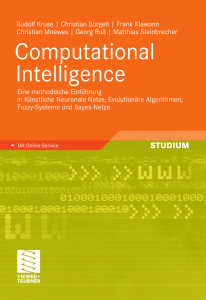Diving deeper into Matlab’s endless built-in functions, I discovered (i.e. read) Mathworks‘ nnet manual. I usually abhor user manuals for specific programming languages, but Mathworks has made it an enjoyable read.
Read the rest of this entry »
Seiten
Kategorien
- agriculture
- conferences
- data mining
- Deutsch
- English
- Environmental Data Mining
- go8-coop
- ICDM 2008
- ICDM 2009
- ICDM 2010
- ICDM 2011
- ICPA 2010
- IDA 2009
- IDA 2010
- IEEE-ICDM10
- IFCS 2009
- IFIP AI-2008
- IPMU 2008
- IPMU 2010
- MLDM 2009
- neuroscience
- personal
- R
- SGAI AI-2007
- SGAI AI-2008
- SGAI AI-2009
- sports science
- Uncategorized
Our recent book
 Data Mining et al — RSS feed
Data Mining et al — RSS feedMeta
Highly recommended: Matlab’s nnet manual
Cross validation — how to determine fold size
When applying cross validation, it is necessary to determine an appropriate size for folds of data to split the data set accordingly. An empirical way to do this is to try different fold sizes and check when the error reaches a minimum (or some other criterion). This is what the latest matlab script does.
Read the rest of this entry »
Underestimating Matlab’s built-in functions
To clean up the main code of the cross-validation script, I decided to source out the part that deals with splitting the data into training and testing sets. After I had created and verified the code, I discovered Matlab’s built-in dividevec function from the Neural Network Toolbox. It does something similar and was introduced from R2006A:
The dividevec function facilitates dividing your data into three distinct sets to be used for training, cross validation, and testing, respectively. Previously, you had to split the data manually.
Using Matlab’s rand() function to determine network parameters
In the recent scripts I used Matlab’s rand() function to seed the random number generator. I aimed at generating reproducible results. However, if the data can be modeled with an MLP, then it should most of the time converge towards the same solution, given that the initialization is not too different (weights from -1 to 1).
Read the rest of this entry »
Experiments with the agriculture data (II)
Yesterday’s entry featured a short cross validation, using a fixed network structure. This structure should be verified and improved.
Read the rest of this entry »
Experiments with the agriculture data (I)
Just to get an impression of the nature of the data, I slightly edited the matlab script that I used with the sports science data and applied it.
Read the rest of this entry »
Miscellaneous
I have been mentioned in a blog post by Sandro Saitta. He already is on my blog roll. His blog was one of the reasons I had to start my own blog for documenting my research right here.
Details on the agriculture data (II)
Since the term precision farming is not as new as one might expect (see, e.g., the links at the end of the Wikipedia article on precision farming), the data I am working on has already been collected using methods of precision farming. There was one trial in 2003 for data collection and another one in 2004 for verification.
The collected attributes and amount of data are as mentioned in the last post. The farming variants that determine the amount of fertilizer are as follows:
- human decision, based on personal experience of farmer, without in-field variability (13% of data)
- human decision with smaller management zones (mapping, 30%)
- sensor decision, based on on-line sensor input from the field, uses decision rules that have been mined off-line (30%)
- nitrogen variation: progression of fertilizer amount to collect data (13%)
- no specific variant (14%)
Next will be a plan on how to construct MLPs from these data and test them. There might be some delay due to my teaching obligations in this year’s winter term.
Details on the agriculture data (I)
The data set that has been kindly provided by Martin Schneider was obtained from growing of winter wheat.
It has roughly 5000 records for small-scale areas of a crop field, which contain the following attributes:
- ID: numeric identifier
- N1, N2, N3: there are three periods (at least in Germany) where fertilizer is applied; these values store the amount used per area
- REIP32, REIP49: indexed value that measures the amount of sunlight reflected from the crop
- EM38: electric conductivity of soil
- Variant: categorical attribute, describes the management strategy applied to the area under consideration
- tractive power: the amount of power that is needed to pull e.g. a plough
- yield 2003, 2004: stores the yield from the respective area
The target is quite similar to the one in the sports science category:
- learn neural networks from the data
- feed the networks with current year’s input data
- predict this year’s yield and / or
- optimize the amount of fertilizer by simulating different amounts and predicting with the ANNs
Fotos der Hochzeitsfeier
Eine Auswahl der von verschiedenen Personen erstellten Hochzeitsfotos ist hier zu finden: http://www.georgruss.de/photos.
Dieselbe Seite kann auch unter http://photos.mariapatrunky.de erreicht werden.
Data Mining et al is powered by WordPress | Using Tiga theme with a bit of Ozh + WP 2.2 / 2.3 Tiga Upgrade
